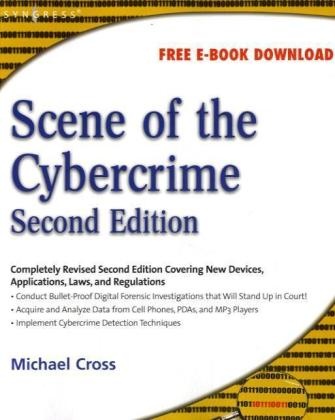Read more
Informationen zum Autor Debra Littlejohn Shinder is a technology consultant, trainer and writer who has authored a number of books on computer operating systems, networking, and client and server security over the last fourteen years. These include Scene of the Cybercrime: Computer Forensics Handbook, published by Syngress, and Computer Networking Essentials, published by Cisco Press. She is co-author, with her husband, Dr. Thomas Shinder, of the best-selling Configuring ISA Server 2000, Configuring ISA Server 2004, and ISA Server and Beyond. Deb has been a tech editor, developmental editor and contributor on over 20 additional books on networking and security subjects, as well as study guides for Microsoft's MCSE exams, CompTIA's Security+ exam and TruSecure's ICSA certification. She formerly edited the Element K Inside Windows Server Security journal. She authored a weekly column for TechRepublic's Windows blog, called Microsoft Insights and a monthly column on Cybercrime, and is a regular contributor to their Security blog, Smart Phones blog and other TR blogs. She is the lead author on Windowsecurity.com and ISAServer.org, and her articles have appeared in print magazines such as Windows IT Pro (formerly Windows & .NET) Magazine. She has authored training material, corporate whitepapers, marketing material, webinars and product documentation for Microsoft Corporation, Intel, Hewlett-Packard, DigitalThink, GFI Software, Sunbelt Software, CNET and other technology companies. Deb specializes in security issues, cybercrime/computer forensics and Microsoft server products; she has been awarded Microsoft's Most Valuable Professional (MVP) status in Enterprise Security for eight years in a row. A former police officer and police academy instructor, she has taught many courses at Eastfield College in Mesquite, TX and sits on the board of the Criminal Justice Training Center there. She is a fourth generation Texan and lives and works in the Dallas-Fort Worth area. Klappentext When it comes to computer crimes! the criminals got a big head start. But the law enforcement and IT security communities are now working diligently to develop the knowledge! skills! and tools to successfully investigate and prosecute Cybercrime cases. When the first edition of "Scene of the Cybercrime" published in 2002! it was one of the first books that educated IT security professionals and law enforcement how to fight Cybercrime. Over the past 5 years a great deal has changed in how computer crimes are perpetrated and subsequently investigated. Also! the IT security and law enforcement communities have dramatically improved their ability to deal with Cybercrime! largely as a result of increased spending and training. According to the 2006 Computer Security Institute's and FBI's joint Cybercrime report: 52% of companies reported unauthorized use of computer systems in the prior 12 months. Each of these incidents is a Cybercrime requiring a certain level of investigation and remediation. And in many cases! an investigation is mandates by federal compliance regulations such as Sarbanes-Oxley! HIPAA! or the Payment Card Industry (PCI) Data Security Standard. Zusammenfassung Suitable for IT security professionals and members of law enforcement! this book describes some of the technical aspects of how cyber crimes are committed! and how technology can be used to track down and build a case against the criminals who commit them. Inhaltsverzeichnis 1. Facing the Cybercrime Problem Head-on 2. Emerging Cybercrime Techniques 3. Understanding the People on the Scene 4. The Computer Investigation Process 5. Acquiring Data, Duplicating Data, and Recovering Deleted Files 6. Understanding Network Intrusions and Attacks 7. Understanding Cybercrime Prevention 8. Implementing Cybercrime Detection Techniques 9. Collecting and Preserving Digital Evidence 10. Analyzing Windows S...
List of contents
1. Facing the Cybercrime Problem Head-on
2. Emerging Cybercrime Techniques
3. Understanding the People on the Scene
4. The Computer Investigation Process
5. Acquiring Data, Duplicating Data, and Recovering Deleted Files
6. Understanding Network Intrusions and Attacks
7. Understanding Cybercrime Prevention
8. Implementing Cybercrime Detection Techniques
9. Collecting and Preserving Digital Evidence
10. Analyzing Windows Systems
11. Analyzing Linux Systems
12. Investigating UNIX Systems
13. Achieving Compliance with Federal Regulations
14. Building the Cybercrime Case
15. Worldwide Forensics Acts and Laws

